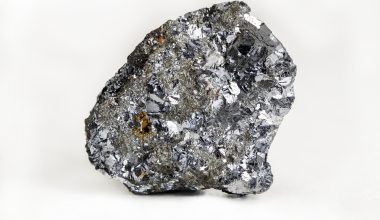This post is also available in:
![]()
Gold mining is an activity that has been carried out since ancient times and has been a source of wealth and power for many civilisations throughout history.
As technology has advanced and new techniques have been discovered, gold mining has evolved into a global industry with significant impacts on the environment and society.
In this article, we will explore the evolution of gold mining from ancient times to the present day and the challenges and opportunities it presents in today’s world.
From pick and shovel to cutting-edge technology: the impressive evolution of mining
Mining has been one of the oldest human activities and has evolved significantly over the years. From the use of pick and shovel to state-of-the-art technology, mining has undergone a radical change in terms of efficiency and safety.
In the past, the extraction of minerals was a dangerous and labour-intensive process. However, with the advancement of technology, specialised tools and machinery have been developed to facilitate and improve the process of mineral extraction.
From drilling and blasting rock to excavating and transporting materials, modern mining has become a highly automated and controlled activity.
The use of sensors and monitoring systems allows miners to obtain real-time information on environmental conditions and the quality of the extracted minerals. In addition, artificial intelligence and machine learning are used to analyse large amounts of data and improve production efficiency.
Environmental sustainability has also been a major concern in modern mining. Measures have been implemented to reduce environmental impact, such as the reuse of water and the implementation of land reclamation and reforestation practices.
In short, the evolution of mining has been impressive, moving from manual methods to advanced and sustainable technology. As technology continues to advance, mining is expected to continue to evolve and improve in terms of efficiency and environmental sustainability.
It is important to continue to reflect on how the mining industry can be improved in terms of safety and sustainability, as its impact is significant on both the economy and the environment.
Discover the ingenious methods used by ancient civilisations to mine gold
Gold has been a precious metal since ancient times and many civilisations have sought ingenious ways to extract it.
The Egyptians, for example, used underground mining techniques to extract gold from rocks. They used copper and bronze tools to dig tunnels and extract the ore from the rock.
The Incas, on the other hand, used open-pit mining techniques to extract gold from rivers and streams. They used wooden and stone tools to separate the gold from the sand and rock.
The Romans also had ingenious methods to extract gold. They used hydraulic mining techniques to extract gold from rivers and streams. They used canals and dams to direct water to the gold mining areas.
In South America, pre-Columbian people used smelting techniques to extract gold from rocks. They heated the rocks with fire and then quickly cooled them with water to make them crack. They then extracted the gold from the cracks.
In short, ancient civilisations used diverse and very ingenious techniques to extract gold from rocks, rivers and streams. These techniques reflect the creativity and ability of these cultures to solve the challenges they faced in their environment.
Today, modern mining uses advanced technology to extract gold more efficiently and safely. However, it is important to recognise and appreciate the techniques used by ancient civilisations to extract this precious metal.
What other mining techniques did ancient civilisations use, and how have mining techniques evolved over time? These are interesting questions to explore further and learn more about the history of mining.
The fascinating history of gold: from antiquity to the present day
Gold has been valued since ancient times for its rarity and beauty, becoming a symbol of wealth and power in many cultures. In the Middle Ages, the Catholic Church used it to decorate its sculptures and liturgical objects, while kings and nobles used it to show their social status.
The gold rush in the 19th century led to the proliferation of mines and the massive extraction of this precious metal. Gold became a key component of the international monetary system and the basis of the gold standard, which remained in force until the First World War.
Today, gold remains a valuable asset and is used in the jewellery, electronics and medical industries, among other sectors. It also remains a store of value in times of economic and political uncertainty.
Throughout history, gold has been the subject of myths and legends, but it has also had a significant impact on the global economy and the evolution of society. Its fascinating history continues to be written.
The surprising story of the discovery of the gold mines that changed history
In the 15th century, a group of Spanish explorers led by Juan Rodriguez de Cabrillo, reached the coast of California. During their expedition, they found a large amount of gold in the mountains of the region. This discovery would change the history of the region and the whole world.
News of the discovery of these gold mines reached the ears of the Spanish crown, who sent more explorers to seek more riches. In time, the gold mines became an important source of wealth for the Spanish and a motivation for the English, who wanted to control the region.
The gold rush attracted thousands of people to the California region, resulting in one of the largest migrations in history. The discovery of these gold mines had a significant impact on the region’s economy and politics, as well as its culture and society.
Today, the California region remains a major centre of gold production, although mining has evolved and become more sustainable and environmentally responsible.
The amazing story of the discovery of the gold mines that changed history shows us how a chance find can have a lasting impact on the world. It is important to remember that our actions can have long-term consequences for the environment and society.
In short, gold mining has been a constant activity over the centuries, evolving in techniques and technologies to meet the growing demand for this precious metal. From manual extraction to large-scale mining and underwater mining, gold remains one of the world’s most valuable resources.
We hope this article has been informative and has provided an overview of the evolution of gold mining throughout history.
See you next time!

